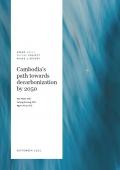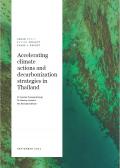
As the 16th largest economy in the world, Indonesia has a high level of energy consumption and undertakes many activities on forest lands and peatlands. As a result, Indonesia is among the countries with the largest annual greenhouse gas (GHG) emissions in the world.
This case study reports on the various methods the Indonesian government has pursued to tackle climate change, starting with development of the National Action Plan for Reducing Greenhouse Gas Emissions in 2011. The country has also prepared a Long-Term Strategy for Low Carbon and Climate Resilience 2050 (LTS-LCCR), which projects that Indonesia needs to substantially reduce emissions from the energy sector to close to zero and minimize forestry and land uses.
The case study offers recommendations on how the country can plan its development pathways in a more sustainable direction as it begins to recover from the the COVID-19 pandemic. Indonesia can also initiate and take a leadership role among ASEAN countries to set regional targets, collaborate and increase commitment for more decisive climate action.




